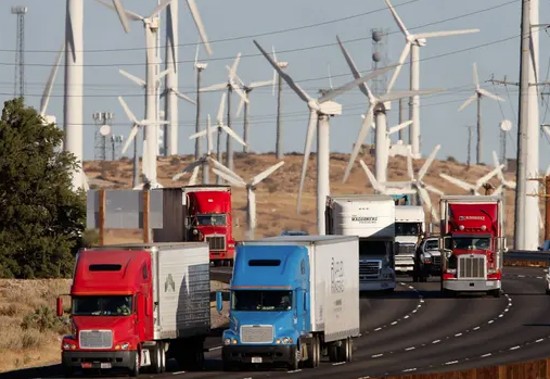California Governor Gavin Newsom has put the state on the most aggressive path in North America to achieve net-zero by 2045 with an 85% emissions reduction target and tree planting and carbon capture offset strategies to make up the remaining 15%.
The state plans to spend $54 billion over the next five years to combat climate change. The money will go to ensuring that all government vehicles will become electric (EVs). So will school buses, trains, and mass urban transit. California will put money into improving the electric grid and will address wildfire and drought with new funded programs. The plans to shut down the nuclear power plant at Diablo Canyon which supplies 9% of the state’s electricity needs have been shelved.
These new initiatives by the state follow last week’s announcement to ban the sale of gasoline and diesel-powered vehicles in the state by 2035.
So the home of the American dream of a car in every driveway, and the place where in the past we pictured smog-filled city air over Los Angeles, and also the world’s fifth largest economy, is now pursuing policies similar to those in the European Union, that is before the invasion of Ukraine by Russia.
It’s ambitious and the question comes to mind, is any of this realistic? Environmentalists are not convinced and many are upset that Diablo Canyon will continue to operate. The pushback calls for renewable projects to replace the nuclear power plant. And although Governor Newsom once took that position, he now, in the face of a prolonged drought that is negatively impacting power generation from the Hoover Dam and other hydroelectric sources, believes that Diablo Canyon represents a better bridging strategy than firing up natural gas thermal powerplants in its place.
Where Governor Newsom leads, others may soon follow. That is particularly true for California’s neighbours to the north, the states of Oregon and Washington which have both demonstrated considerable zeal in addressing climate change. Along with British Columbia across the 49th parallel, it appears that the North American West Coast understands the need for urgency in the fight to lower carbon emissions. After all, here is where the megadrought persists, and where British Columbia, Washington and Oregon experienced a heat dome in 2021 that soon was followed by an atmospheric river that unleashed extreme flooding. This is where wildfires have devastated thousands of hectares of forests.
This is also where in North America the first carbon cap-and-trade programs arose as well as the first issuance of a carbon tax. Cap-and-trade markets now exist in a number of U.S. states, and Canada has federally instituted a price on carbon for the entire nation.
How realistic is Gavin Newsom’s program for California? Policy wonks in that state question whether California can even meet the interim 2030 emission reduction target (40% from 1990 levels) let alone the 85% reduction by 2045. In a New York Times article published today, Danny Cullenward, Policy Director at CarbonPlan, a not-for-profit organization that studies government programs, indicates that he believes a lot of work is needed to achieve the governor’s lofty ambitions. He states, “If these new targets force state regulators to go back to the drawing board and come up with a credible new plan to cut emissions, that’s great. But in my view, they still don’t have a realistic plan for implementation, and that’s the most important part.”
Legislation highlights and other initiatives for the state include:
- $46.1 billion for EVs and electric school buses.
- $14.8 billion for rail and transit.
- $8 billion for the electrical grid.
- $2.7 billion for wildfire prevention.
- $2.8 billion for water programs.
- $1.4 billion in loans to Pacific Gas & Electric to keep Diablo Canyon running. The utility is also applying for a $6 billion loan from money set aside by the federal government in the Inflation Reduction Act.
- A share of $3.5 billion in federal money for the building of direct air carbon capture projects.









